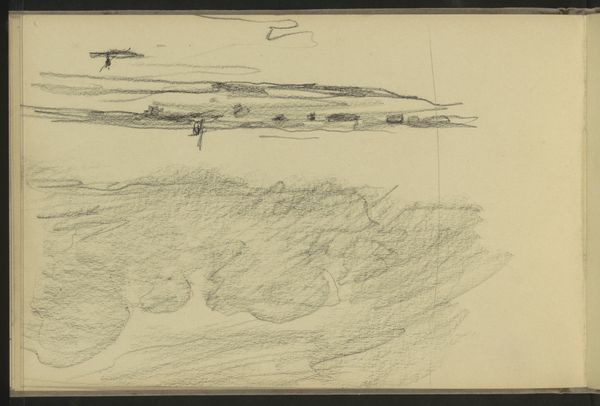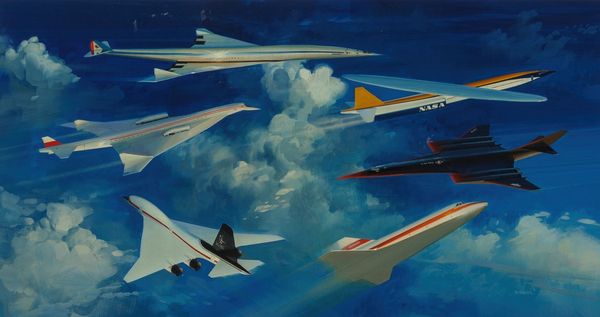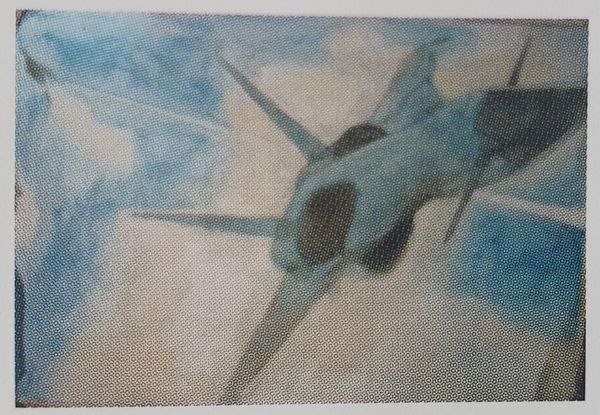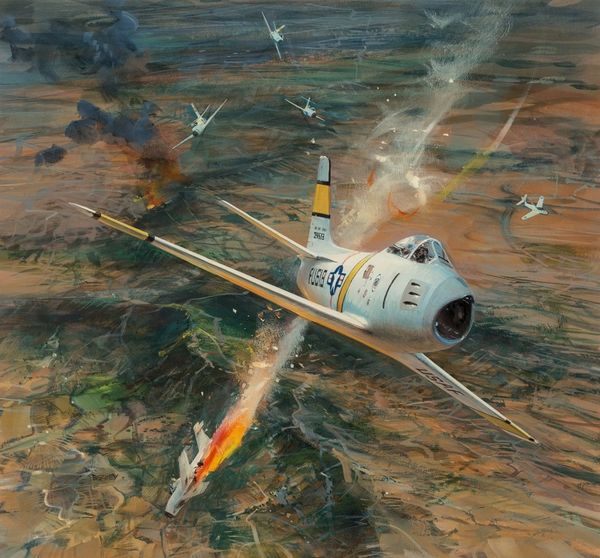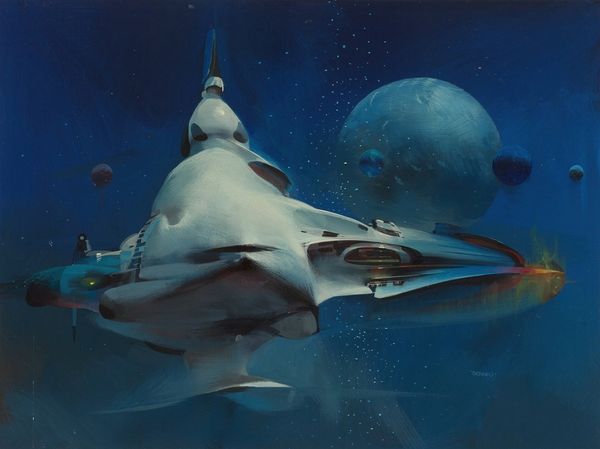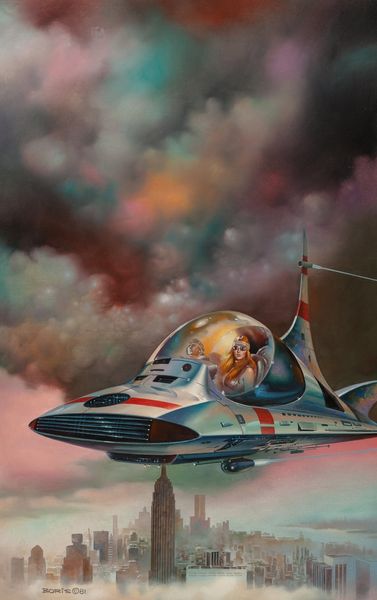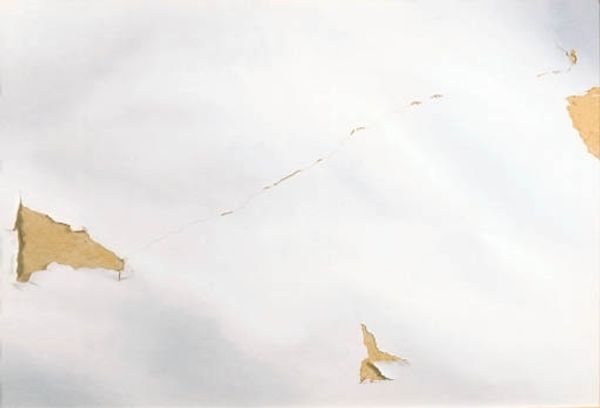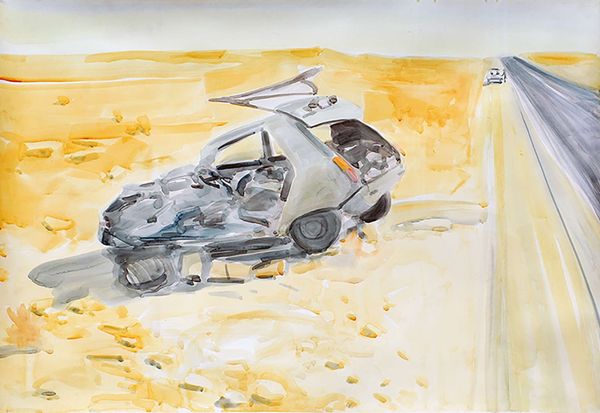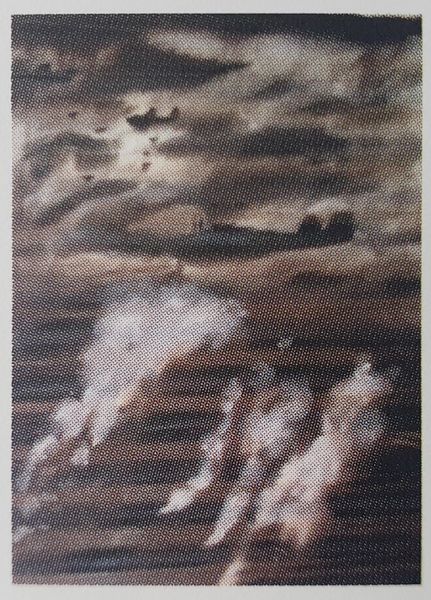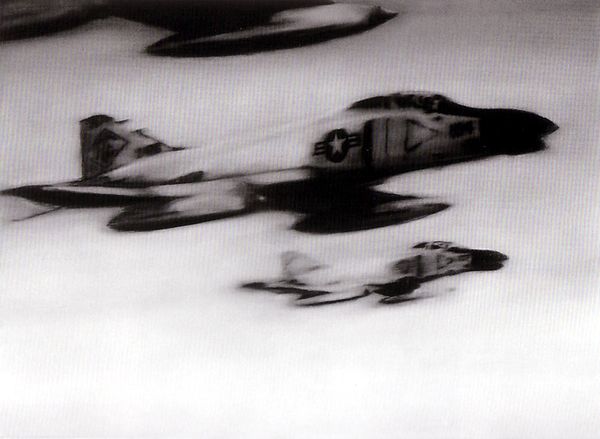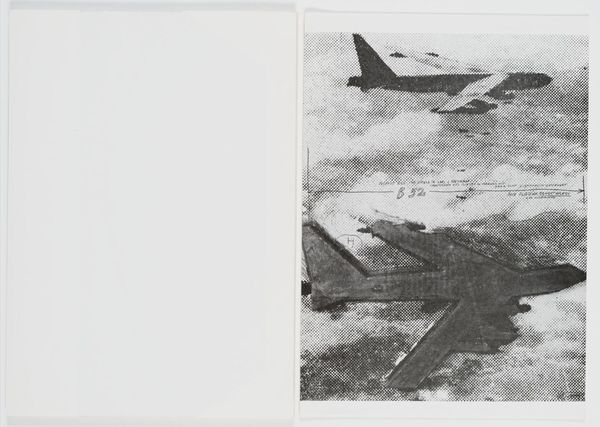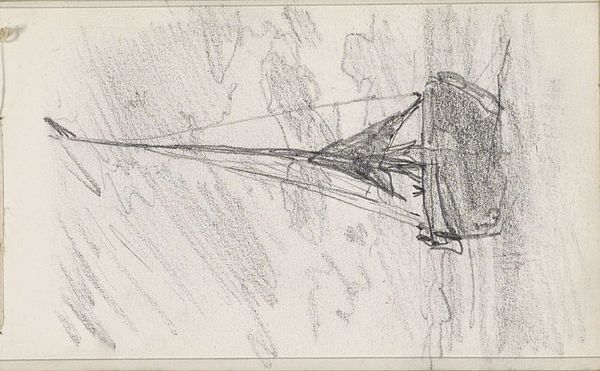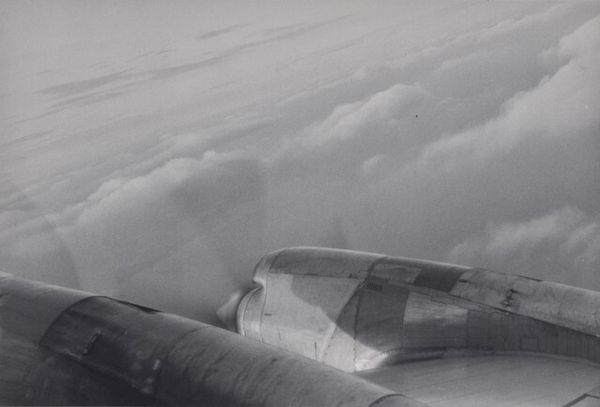
painting
#
painting
#
pencil sketch
#
vehicle
#
landscape
#
charcoal drawing
#
figuration
#
pencil drawing
#
capitalist-realism
#
graphite
#
modernism
#
realism
Copyright: 2019 Gerhard Richter - All Rights Reserved
Curator: Gerhard Richter's 1963 work, "Jet Fighter," depicts precisely that, a war plane in flight. Editor: The first thing that strikes me is how fleeting it feels. It's like a memory, indistinct and quickly vanishing, created with some form of diluted graphite no doubt, but a fascinating painting method for the time, seemingly intentionally dissolving right before your eyes! Curator: Richter came of age during and after the Second World War in Germany; how might we interpret the jet fighter within this socio-historical context? What symbolic associations are evoked, if any? Editor: Given his context, perhaps this smudging, dissolving effect intentionally alludes to trauma, a post-war Germany struggling to define and rebuild itself from nothing after the total societal collapse under national socialism, materially and ideologically. Was there an industrial source for his pigments, or perhaps some element of destruction to echo his cultural concerns, a recycling perhaps? Curator: It's fascinating to see you ground the reading of this artwork so concretely to postwar production chains and trauma as mirrored in both cultural concerns and materials. I’d further emphasize its symbolic function as a motif of technology and war and destruction looming large in collective consciousness. A modern, mechanized figure, it's rendered here as ephemeral and intangible, mirroring perhaps a skepticism of its powers. Editor: And the way that he presents it – the very method – becomes inextricably linked with that message. It feels intentional rather than simply imitative, reflecting mass-production of arms in postwar West Germany. The artist using, critiquing, and showing his awareness of manufacture all at once. I wonder if his earlier political experiences affected that so much at a fundamental process level. Curator: Exactly! It shows, in effect, both an embrace and a suspicion of such technology as an uncanny harbinger for a generation. Perhaps even questioning modern systems of belief with new materials—almost ritualistic. Well, this has been a rather fruitful deconstruction. Editor: Indeed. It’s incredible how focusing on the artwork's physical making and political roots enriches our understanding, leading us to even deeper layers of socio-historical interpretation.
Comments
No comments
Be the first to comment and join the conversation on the ultimate creative platform.
